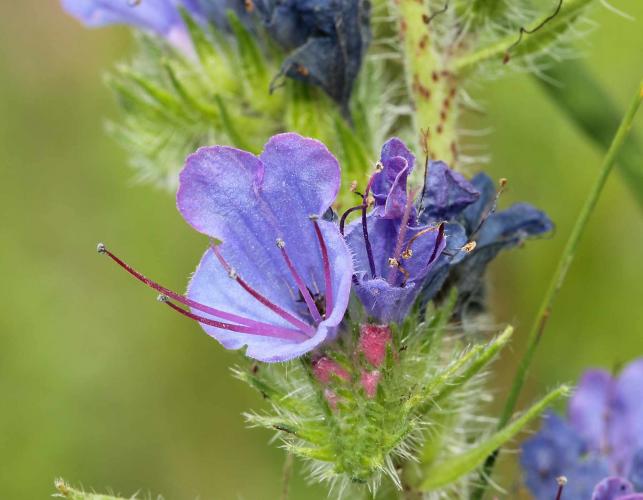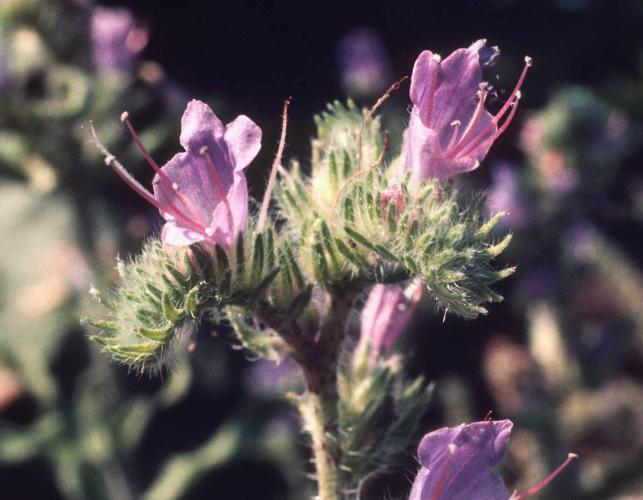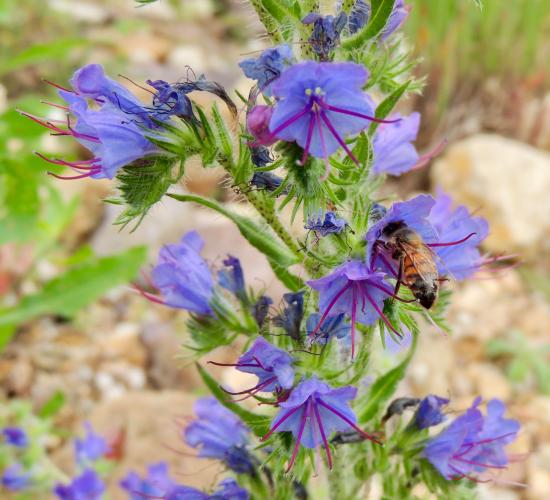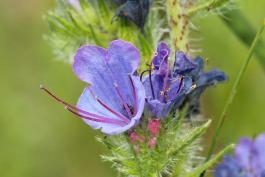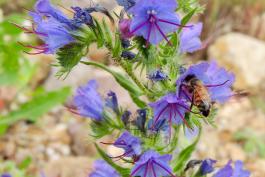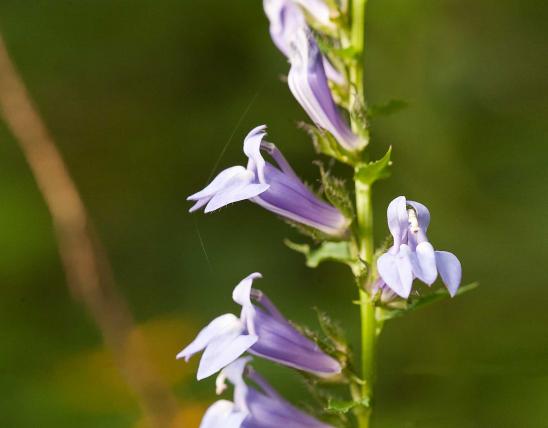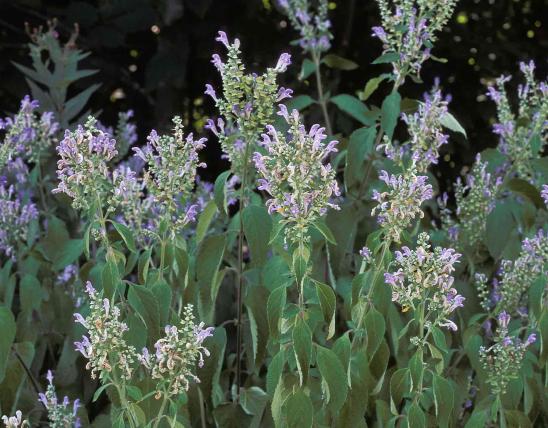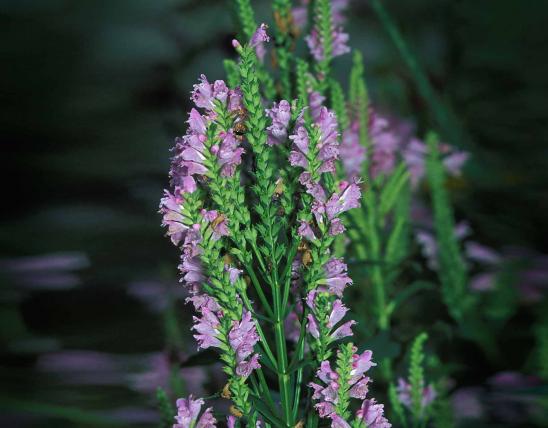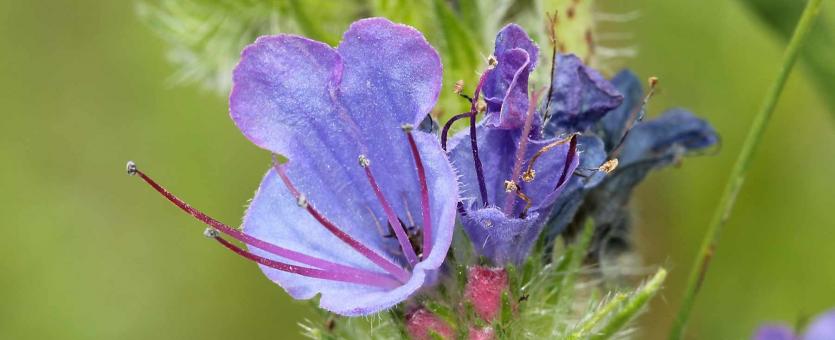
Viper’s bugloss is a biennial plant with bristly hairs and usually with single stems. Flowers along upper stalks in one-sided spikes in an unfurling, tight coil; funnel-shaped with uneven lobes to ¾ inch long; pink in bud, blue to ultramarine later, with pink stamens protruding. A form with white flowers occurs rarely. Blooms May–September. Leaves linear-oblong, sessile, extremely white-hairy (as are the stems), giving the plant a silvery appearance.
Height: 1 to 2½ feet.

Scattered mostly in the eastern half of the Ozarks and Ozark Border Divisions of north, eastern, and central Missouri.
Habitat and Conservation
Native to Europe. Occurs in moist or dry places, including banks of streams or rivers, gravel bars, upland prairies, openings of moist upland forests, pastures, railroads, roadsides, and open, disturbed areas.
Status
“Bugloss” is a common name for borages in Europe. The plant is associated with “vipers” because the nutlets supposedly resemble a snake’s head. According to antique medicinal reasoning, that resemblance signified that the plant could function as a treatment for snakebites. Since the plant contains toxic alkaloids, eating it could poison you.
Human Connections
This plant, like many other members of the borage family, contains toxic alkaloids that make it a potential problem for livestock that graze on it, which might happen if this plant spreads to an overgrazed pasture from a nearby roadside.
Ecosystem Connections
Bees, butterflies, skippers, and other insects are attracted to the pollen of viper’s bugloss. With its toxic chemicals, it is unlikely that many mammals eat it. If caterpillars (immature butterflies and moths) eat it, there is a good chance they become toxic, thus protected from their predators.
